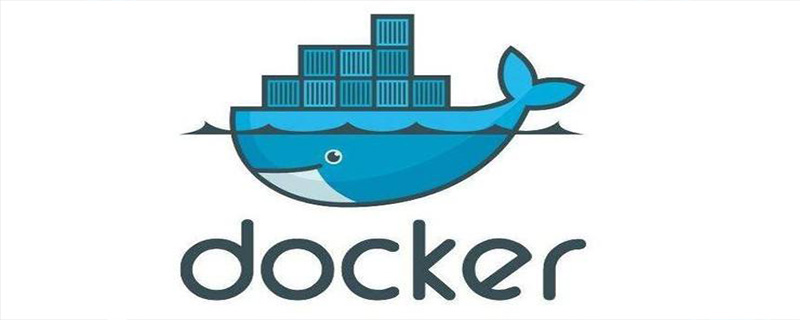docker reports error exited(137)

Docker container failed to start, error: Exited (137) *** ago, such as
Exited (137) 16 seconds ago
at this time No logs can be found through docker logs. From mesos, there is only one sentence related to stderr:
I0409 16:56:26.408077 8583 executor.cpp:736] Container exited with status 137
Through docker inspect checks that the container status is
"State": {
"Status": "exited",
"Running": false,
"Paused": false,
"Restarting": false,
"OOMKilled": true,
"Dead": false,
"Pid": 0,
"ExitCode": 137,
"Error": "",
"StartedAt": "2019-04-09T08:50:48.058583459Z",
"FinishedAt": "2019-04-09T08:50:55.456317695Z"
},It can be seen that it is because of OOMKilled. Check the oom log through journalctl as follows:
# journalctl -k | grep -i -e memory -e oom Apr 09 16:00:14 cdp-test-server-05.bj kernel: java invoked oom-killer: gfp_mask=0xd0, order=0, oom_score_adj=0 Apr 09 16:00:14 cdp-test-server-05.bj kernel: [<ffffffff8c3ba524>] oom_kill_process+0x254/0x3d0 Apr 09 16:00:14 cdp-test-server-05.bj kernel: [<ffffffff8c435346>] mem_cgroup_oom_synchronize+0x546/0x570 Apr 09 16:00:14 cdp-test-server-05.bj kernel: [<ffffffff8c3badb4>] pagefault_out_of_memory+0x14/0x90 Apr 09 16:00:14 cdp-test-server-05.bj kernel: memory: usage 524288kB, limit 524288kB, failcnt 8430 Apr 09 16:00:14 cdp-test-server-05.bj kernel: memory+swap: usage 524288kB, limit 1048576kB, failcnt 0 Apr 09 16:00:14 cdp-test-server-05.bj kernel: Memory cgroup stats for /docker/3aafdee2b919fa936815fbb88ebd8bb3131c185690284491f583c62ff382b1fe: cache:20KB rss:524268KB rss_huge:0KB mapped_file:8KB swap:0KB inactive_anon:0KB active_anon:524236KB inactive_file:8KB active_file:8KB unevictable:0KB Apr 09 16:00:14 cdp-test-server-05.bj kernel: [ pid ] uid tgid total_vm rss nr_ptes swapents oom_score_adj name Apr 09 16:00:14 cdp-test-server-05.bj kernel: Memory cgroup out of memory: Kill process 10768 (java) score 1021 or sacrifice child
The reason is that the container is only allocated 512M, but requires 1G (for example, -Xms1G is set in the configuration file -Xmx1G)
For more related tutorials, please pay attention to the docker tutorial column on the PHP Chinese website.
The above is the detailed content of docker reports error exited(137). For more information, please follow other related articles on the PHP Chinese website!

Hot AI Tools

Undresser.AI Undress
AI-powered app for creating realistic nude photos

AI Clothes Remover
Online AI tool for removing clothes from photos.

Undress AI Tool
Undress images for free

Clothoff.io
AI clothes remover

AI Hentai Generator
Generate AI Hentai for free.

Hot Article

Hot Tools

Notepad++7.3.1
Easy-to-use and free code editor

SublimeText3 Chinese version
Chinese version, very easy to use

Zend Studio 13.0.1
Powerful PHP integrated development environment

Dreamweaver CS6
Visual web development tools

SublimeText3 Mac version
God-level code editing software (SublimeText3)

Hot Topics
 1382
1382
 52
52
 How to create a mirror in docker
Apr 15, 2025 am 11:27 AM
How to create a mirror in docker
Apr 15, 2025 am 11:27 AM
Steps to create a Docker image: Write a Dockerfile that contains the build instructions. Build the image in the terminal, using the docker build command. Tag the image and assign names and tags using the docker tag command.
 How to use docker desktop
Apr 15, 2025 am 11:45 AM
How to use docker desktop
Apr 15, 2025 am 11:45 AM
How to use Docker Desktop? Docker Desktop is a tool for running Docker containers on local machines. The steps to use include: 1. Install Docker Desktop; 2. Start Docker Desktop; 3. Create Docker image (using Dockerfile); 4. Build Docker image (using docker build); 5. Run Docker container (using docker run).
 How to view logs from docker
Apr 15, 2025 pm 12:24 PM
How to view logs from docker
Apr 15, 2025 pm 12:24 PM
The methods to view Docker logs include: using the docker logs command, for example: docker logs CONTAINER_NAME Use the docker exec command to run /bin/sh and view the log file, for example: docker exec -it CONTAINER_NAME /bin/sh ; cat /var/log/CONTAINER_NAME.log Use the docker-compose logs command of Docker Compose, for example: docker-compose -f docker-com
 How to read the docker version
Apr 15, 2025 am 11:51 AM
How to read the docker version
Apr 15, 2025 am 11:51 AM
To get the Docker version, you can perform the following steps: Run the Docker command "docker --version" to view the client and server versions. For Mac or Windows, you can also view version information through the Version tab of the Docker Desktop GUI or the About Docker Desktop menu.
 How to change the docker image source in China
Apr 15, 2025 am 11:30 AM
How to change the docker image source in China
Apr 15, 2025 am 11:30 AM
You can switch to the domestic mirror source. The steps are as follows: 1. Edit the configuration file /etc/docker/daemon.json and add the mirror source address; 2. After saving and exiting, restart the Docker service sudo systemctl restart docker to improve the image download speed and stability.
 How to check the name of the docker container
Apr 15, 2025 pm 12:21 PM
How to check the name of the docker container
Apr 15, 2025 pm 12:21 PM
You can query the Docker container name by following the steps: List all containers (docker ps). Filter the container list (using the grep command). Gets the container name (located in the "NAMES" column).
 How to build a private repository by docker
Apr 15, 2025 am 11:06 AM
How to build a private repository by docker
Apr 15, 2025 am 11:06 AM
You can build Docker private repositories to securely store and manage container images, providing strict control and security. The steps include: creating a repository, granting access, deploying a repository, pushing an image, and pulling an image. Advantages include security, version control, reduced network traffic and customization.
 How to save docker image
Apr 15, 2025 am 11:54 AM
How to save docker image
Apr 15, 2025 am 11:54 AM
To save the image in Docker, you can use the docker commit command to create a new image, containing the current state of the specified container, syntax: docker commit [Options] Container ID Image name. To save the image to the repository, you can use the docker push command, syntax: docker push image name [: tag]. To import saved images, you can use the docker pull command, syntax: docker pull image name [: tag].




